Street Art
A huge reason behind the pieces I chose to gather in my exhibition is due to the constant reminder of the political conversation that is taking place on the walls of Athens. There’s an incredibly vast amount of non-traditional art that is being created by street artists, in a setting that is kind of an antithesis to museums.
I was really interested in looking at what matters to everyday Greek people through the prolific presence of street art.
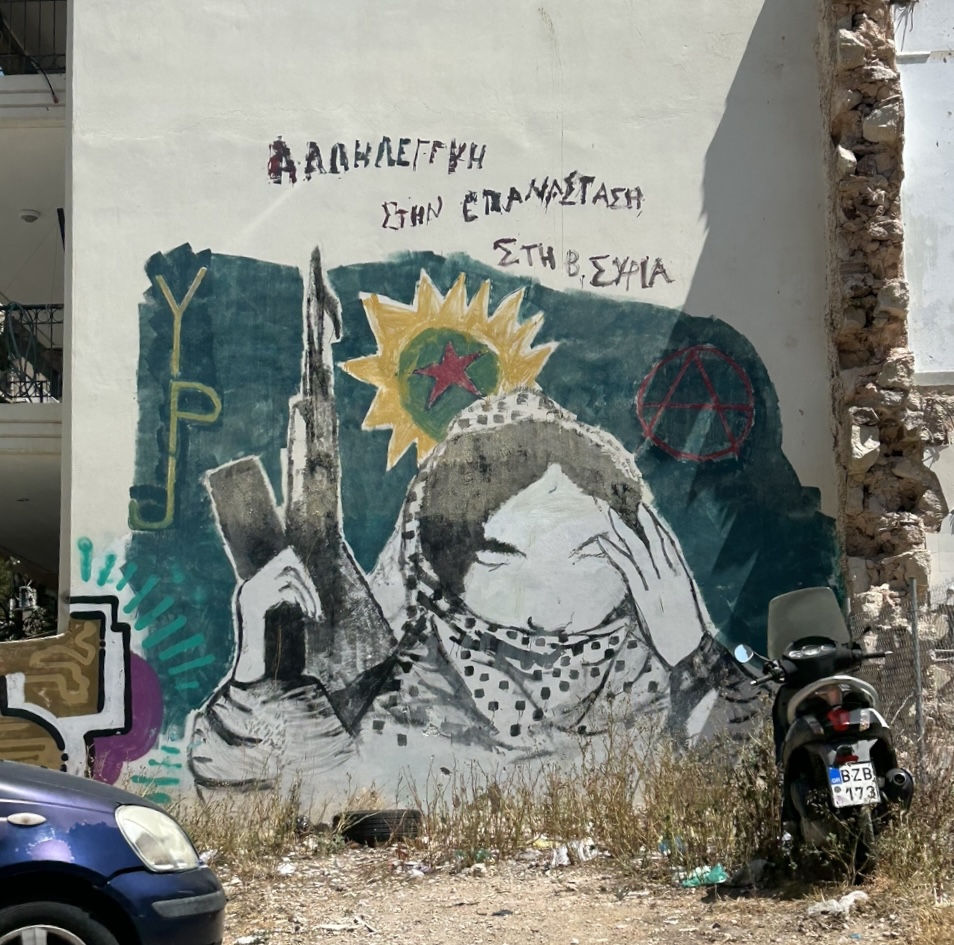
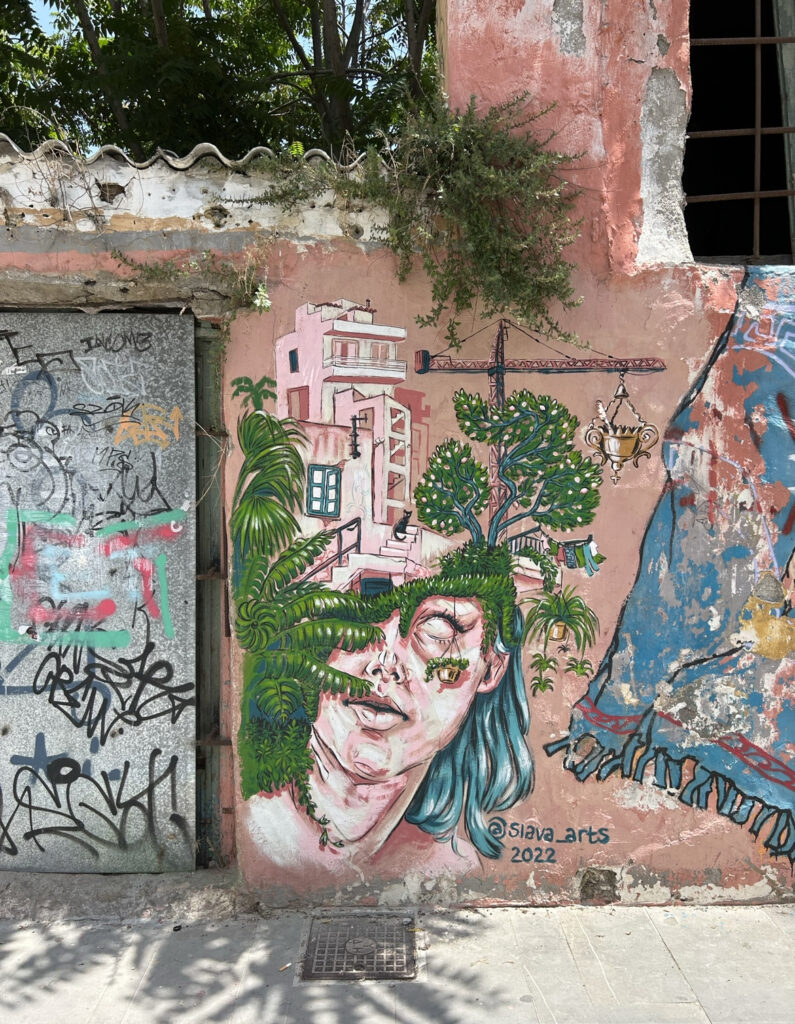

A look into the art:
Through street art, we are able to see what kinds of topics and issues matter most to everyday people. These are some of the works that I found that particularly resonated with me. A huge array of topics are present in these paintings, which are incredibly political and represent both Greek and international narratives.
#1: This painting was one near my apartment that I passed every day. The “YPJ” written on the left stands for Women’s Protection Units, which is an all-female militia involved in the Syrian civil war.
#2: In this second work, we see acknowledgements of Greece’s major role in the formation of art and culture, and the impacts of what industry and progress on top of history itself means. New buildings are being built on top of a female figure that appears to be very statuesque, almost as if she has been crafted out of marble. It creates a contrast between modernity and the past.
#3: A story of immigrant mothers is depicted in this piece. It is a story about asylum seekers, which is a frequent theme that is portrayed on the streets of Athens.
Asylum seekers in Greece
On 14 June 2023, while I was living in Athens, a boat smuggling migrants sank in the Ionian Sea off the coast of Greece. It was Italy-bound, and was not built for the vast number of people it was carrying. It was a rusty, aging, overloaded fishing trawler. Its maximum capacity was 400 people, however it was holding between 500 and 750 at the time that it went down. The boat was making its way from Libya to Italy, carrying Egyptian, Syrian, Pakistani, Afghan, and Palestinian passengers. There were only 104 survivors.
Over 1 million migrants have arrived in Europe via the Aegean sea in the 2010’s. 82% of this population arrive in Greece because of its position as an entry point to the rest of Europe. “The U.N.’s International Organization for Migration has recorded more than 26,000 deaths or disappearances in the Mediterranean since 2014, including over 20,000 along the Central Mediterranean route, making it the world’s deadliest one” (Time Magazine). Propositions have been made to increase the safety of refugees in these international waters, but these have yet to be enacted.
The response
The morning after the Messina migrant boat disaster artists and activists took to the streets of Athens. Every inch of the street I lived on, from the walls of buildings to sidewalks and posts, were covered in graffiti and messages in solidarity.
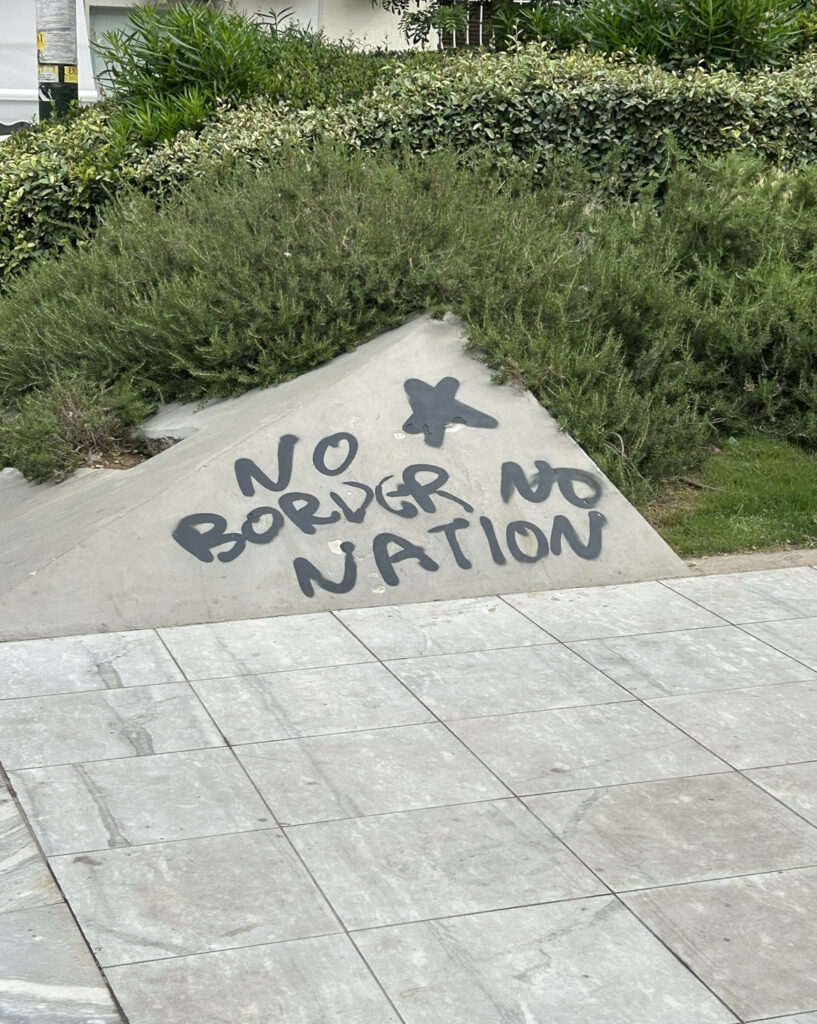
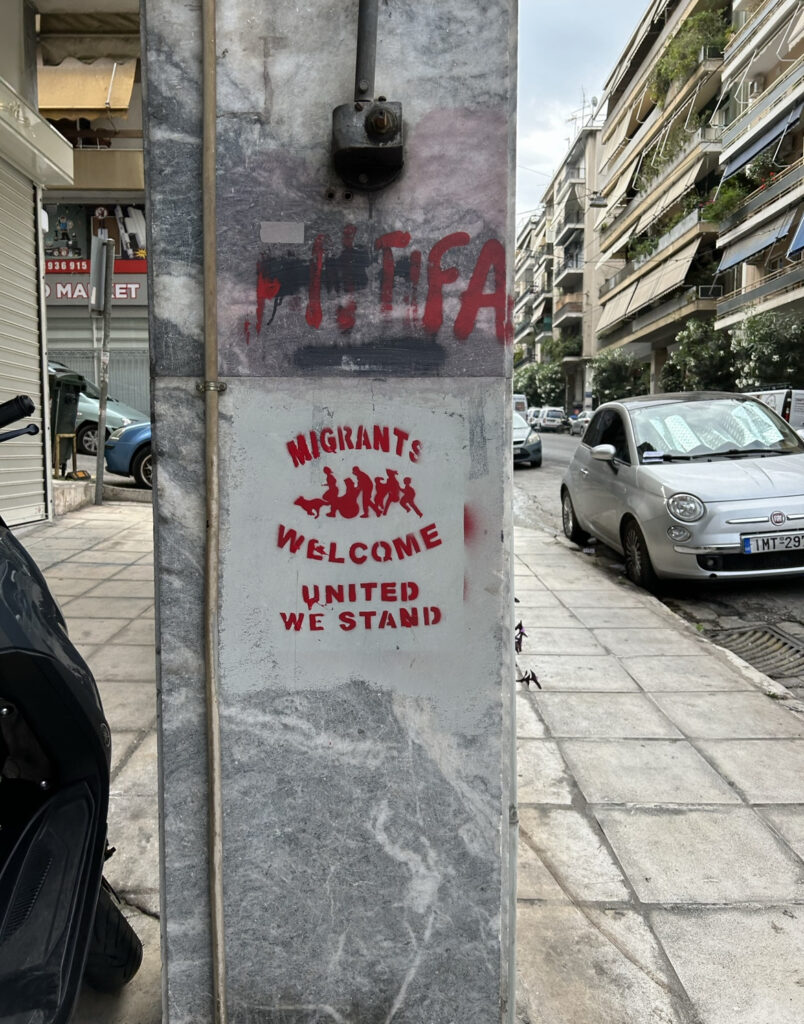
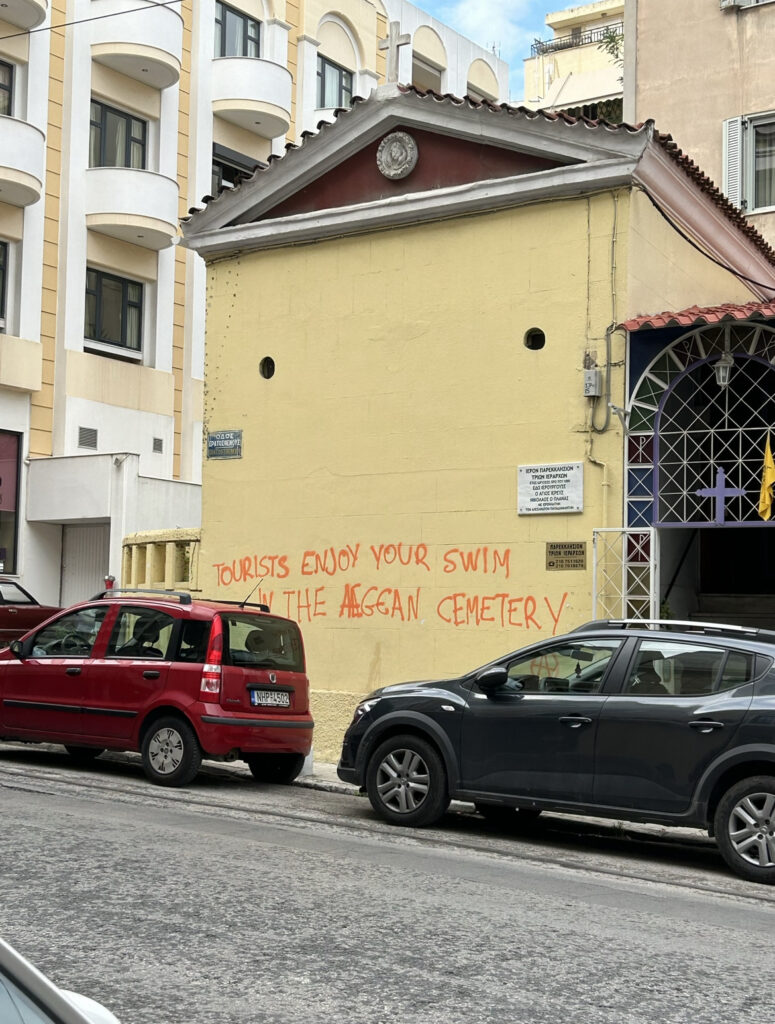
Athenian street art made me really think about the stories we choose to depict and to tell within our museums. The works I chose reflect the kinds of stories that are important right now for the Greek people to be represented, especially within respected cultural institutions.
The professor who taught the course I took has done extensive research on Athenian street art. In her words, street art reflects “…the political (under)currents that mandate the average citizen’s stance and attitude”. What we preserve, and how we talk about it, are things that are incredibly important to keep in mind when thinking about art and museums.